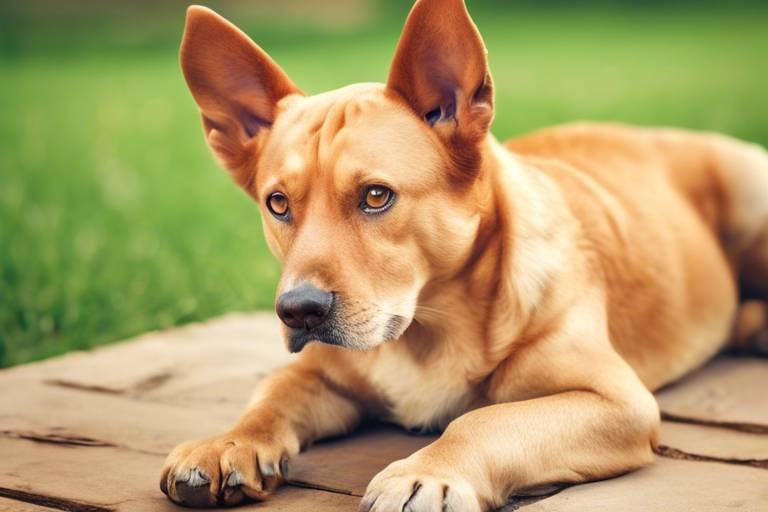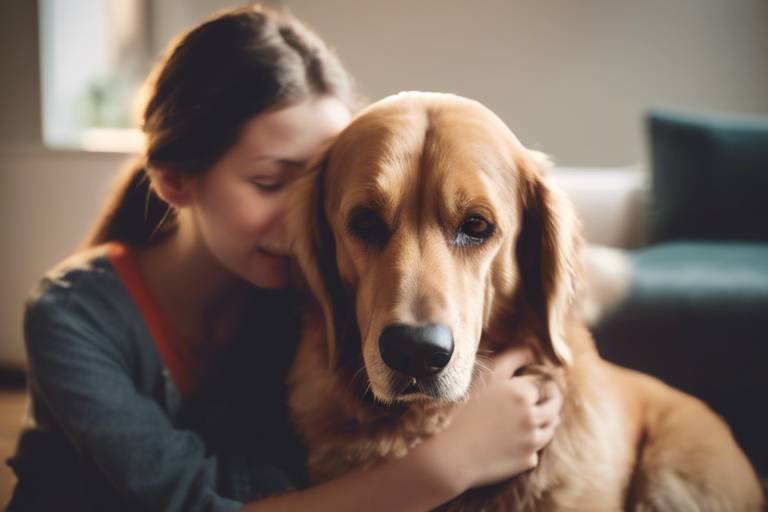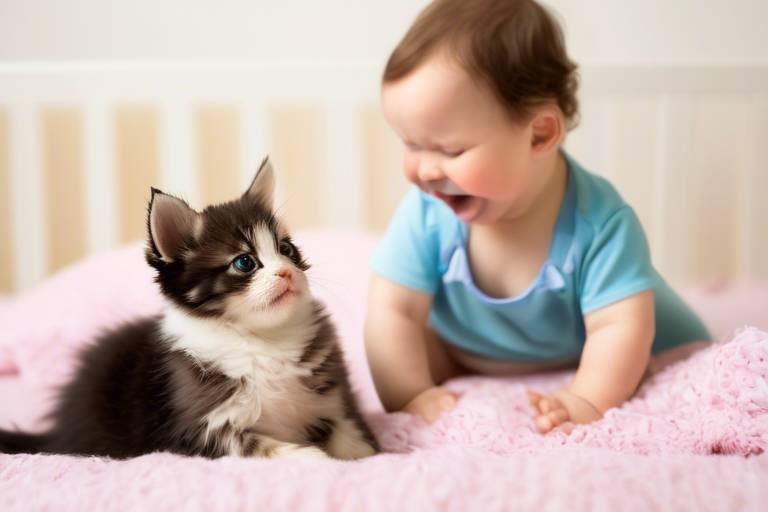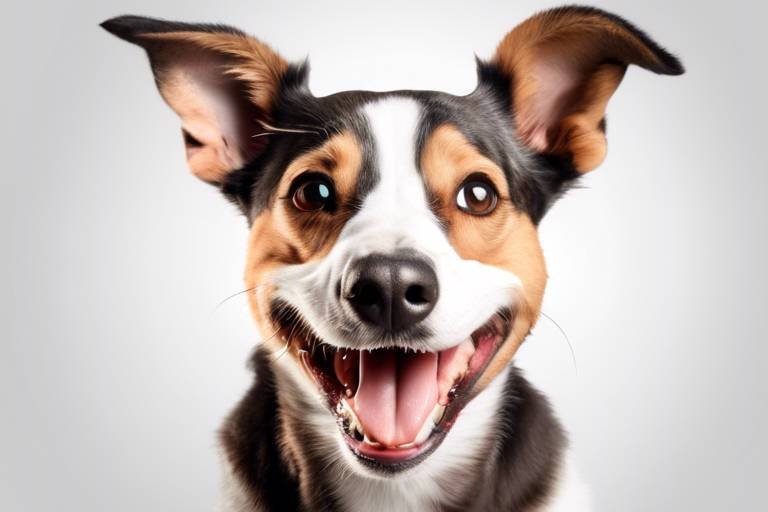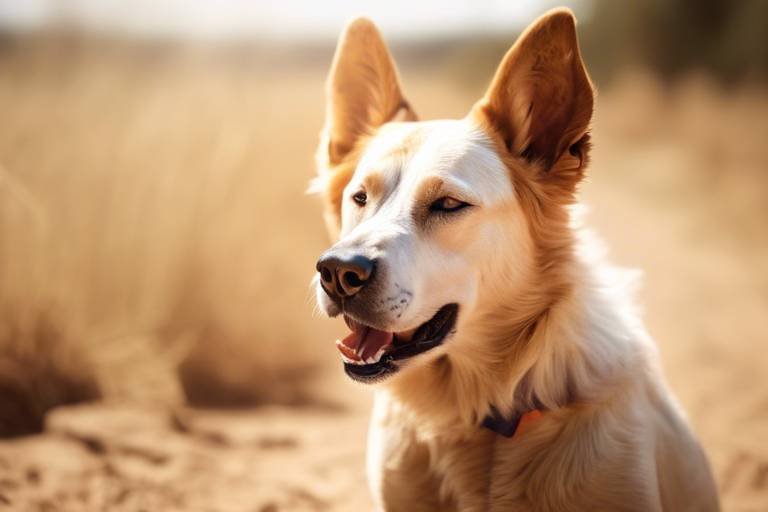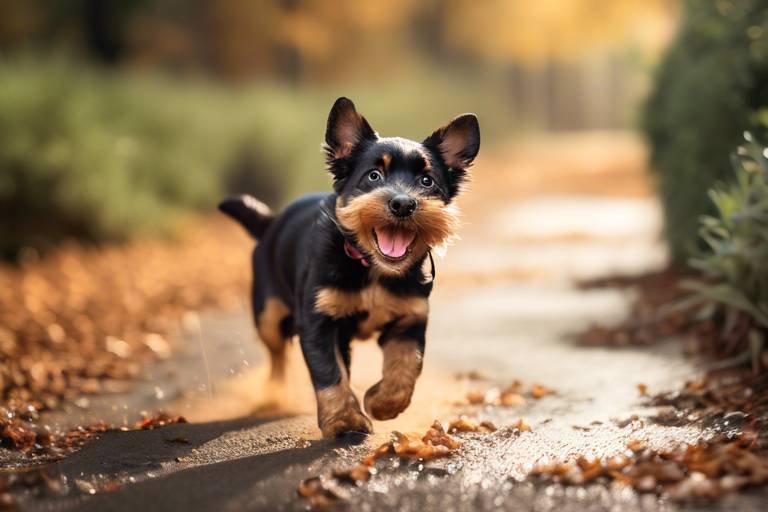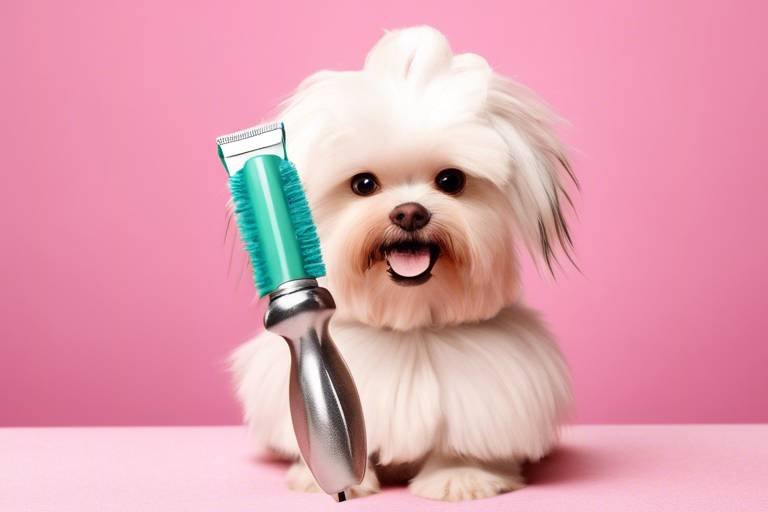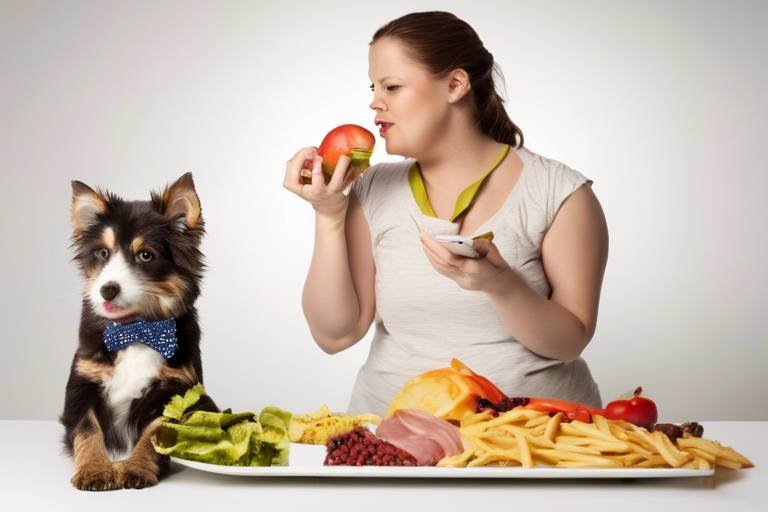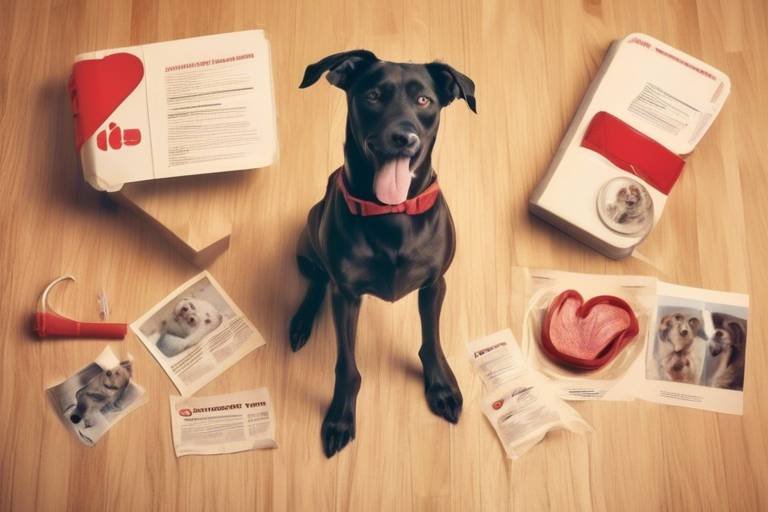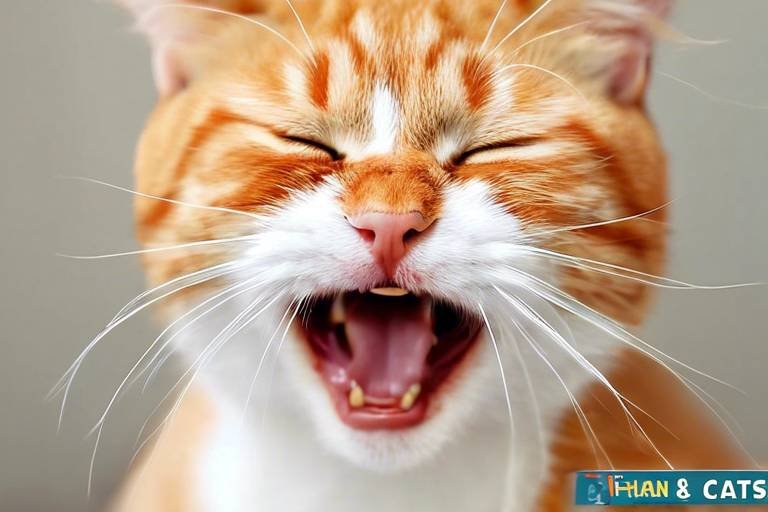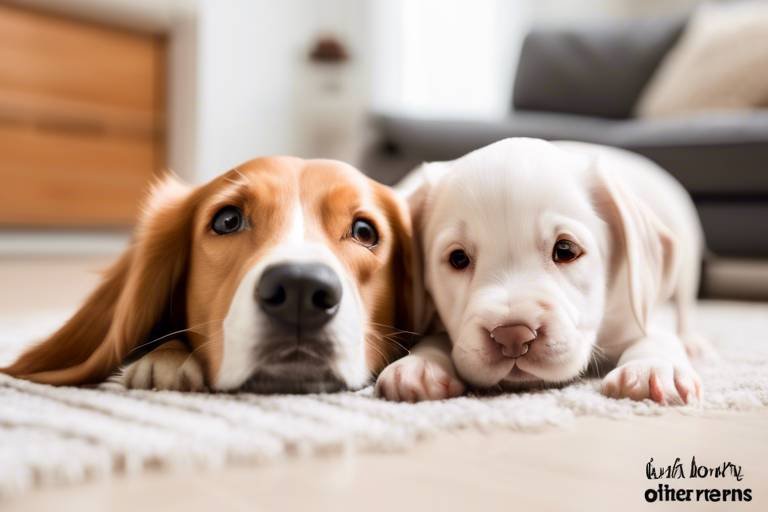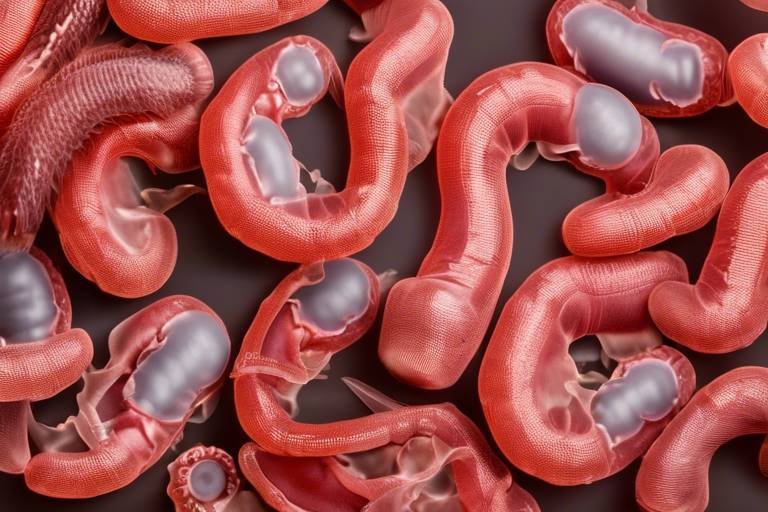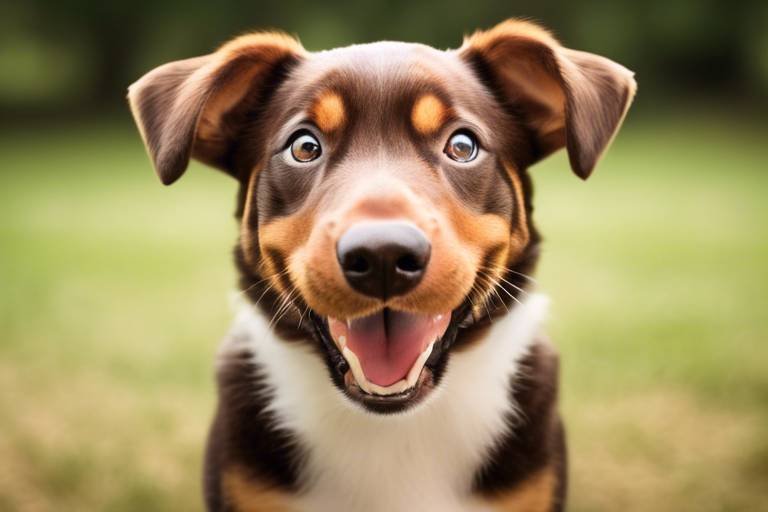How to Spot the Signs of Dehydration in Pets
As pet owners, we often find ourselves wrapped around the little paws of our furry companions, ensuring they are happy and healthy. However, in our quest to provide the best care, we sometimes overlook the subtle signs that indicate our pets might be struggling with dehydration. Just like you wouldn’t ignore a parched throat on a hot day, your pet also deserves your attention when it comes to their hydration levels. Understanding how to spot the signs of dehydration can be a lifesaver, quite literally. So, let’s dive into the world of pet hydration and learn how to keep our beloved animals healthy and hydrated.
Dehydration is a serious condition that occurs when pets lose more fluids than they consume. Imagine yourself after a long day in the sun without water; you’d feel sluggish and unwell. Pets experience the same discomfort, and it’s crucial for pet owners to recognize the causes and effects of dehydration to prevent serious health issues. Factors such as hot weather, prolonged exercise, or even certain health conditions can lead to a rapid loss of fluids. By understanding these factors, you can take proactive measures to keep your furry friend hydrated and happy.
Recognizing the common symptoms of dehydration in pets can be lifesaving. Symptoms like dry gums, lethargy, and decreased skin elasticity are clear indicators that immediate action may be necessary. Think of these symptoms as warning lights on your dashboard; ignoring them could lead to a breakdown. By being vigilant and observant, you can catch these signs early and ensure your pet gets the care they need.
A dry mouth and gums are primary indicators of dehydration. Just like you would check your own mouth for moisture, pet owners should regularly inspect their pets' oral health. To check for dryness, gently lift your pet's lip and observe the color and texture of their gums. Healthy gums should be pink and moist, while dry or pale gums indicate dehydration. It’s a simple yet effective way to gauge their hydration status.
To assess gum moisture effectively, follow these steps:
- Gently lift your pet's lip.
- Observe the color of the gums.
- Press your finger against the gum and release it; it should return to its pink color quickly.
If the gums appear dry or the color is pale, it’s time to take action. Remember, early detection is key!
Lethargy is another critical sign of dehydration. If your normally playful pet suddenly becomes less active and shows reduced interest in their favorite activities, this could signal a serious issue. Just like you’d notice when a friend seems off, being aware of your pet’s energy levels can help you identify when something’s wrong. A lethargic pet may need immediate veterinary attention, so don’t hesitate to act if you notice these changes.
Performing a skin elasticity test can also help determine hydration levels. Gently pinch the skin on the back of your pet's neck and observe how quickly it returns to its normal position. If the skin takes longer to return, this may indicate dehydration. Think of it as a quick check-up that you can do at home!
Several factors can increase the risk of dehydration in pets. Hot weather, illness, and high activity levels can all contribute to fluid loss. Understanding these risks allows pet owners to take preventive measures. For instance, during scorching summer days, it’s vital to ensure your pets have access to fresh water and shade. Just like you wouldn’t run a marathon without hydration, your pets need the same consideration.
Hot weather and humidity can exacerbate dehydration. If you’re sweating, chances are your pet is too! Ensure your animals have constant access to fresh water and shaded areas during outdoor activities. A little planning goes a long way in keeping them comfortable.
Certain health conditions, such as diabetes or kidney disease, can increase a pet's risk of dehydration. Regular veterinary check-ups can help monitor and manage these risks effectively. It’s like having a wellness plan for your pet; staying ahead of potential issues can make all the difference.
Prevention is key to keeping pets hydrated. Ensuring access to fresh water, monitoring activity levels, and adjusting care during hot weather can significantly reduce the risk of dehydration. Just like you’d pack a water bottle for a day out, make sure your pets have what they need to stay hydrated.
Providing plenty of fresh water and incorporating wet food into a pet's diet can enhance hydration. Wet food is like a refreshing drink on a hot day; it not only tastes good but also helps keep your pet hydrated. Encourage regular drinking, especially in warmer months, to keep those hydration levels up!
Keeping track of your pet's water intake can help identify potential dehydration early. Be aware of their drinking habits and adjust accordingly. If you notice they’re not drinking as much as usual, it’s time to intervene. After all, a little vigilance can go a long way in ensuring your pet stays healthy.
Q: How can I tell if my pet is dehydrated?
A: Look for signs like dry gums, lethargy, and decreased skin elasticity. Regular checks can help catch dehydration early.
Q: What should I do if I suspect my pet is dehydrated?
A: Offer fresh water immediately and consult your veterinarian if symptoms persist or worsen.
Q: Can certain foods help with hydration?
A: Yes! Wet food can increase hydration levels, so consider incorporating it into your pet's diet.
Q: How often should I check my pet's water intake?
A: Regularly monitor their drinking habits, especially during hot weather or after exercise.
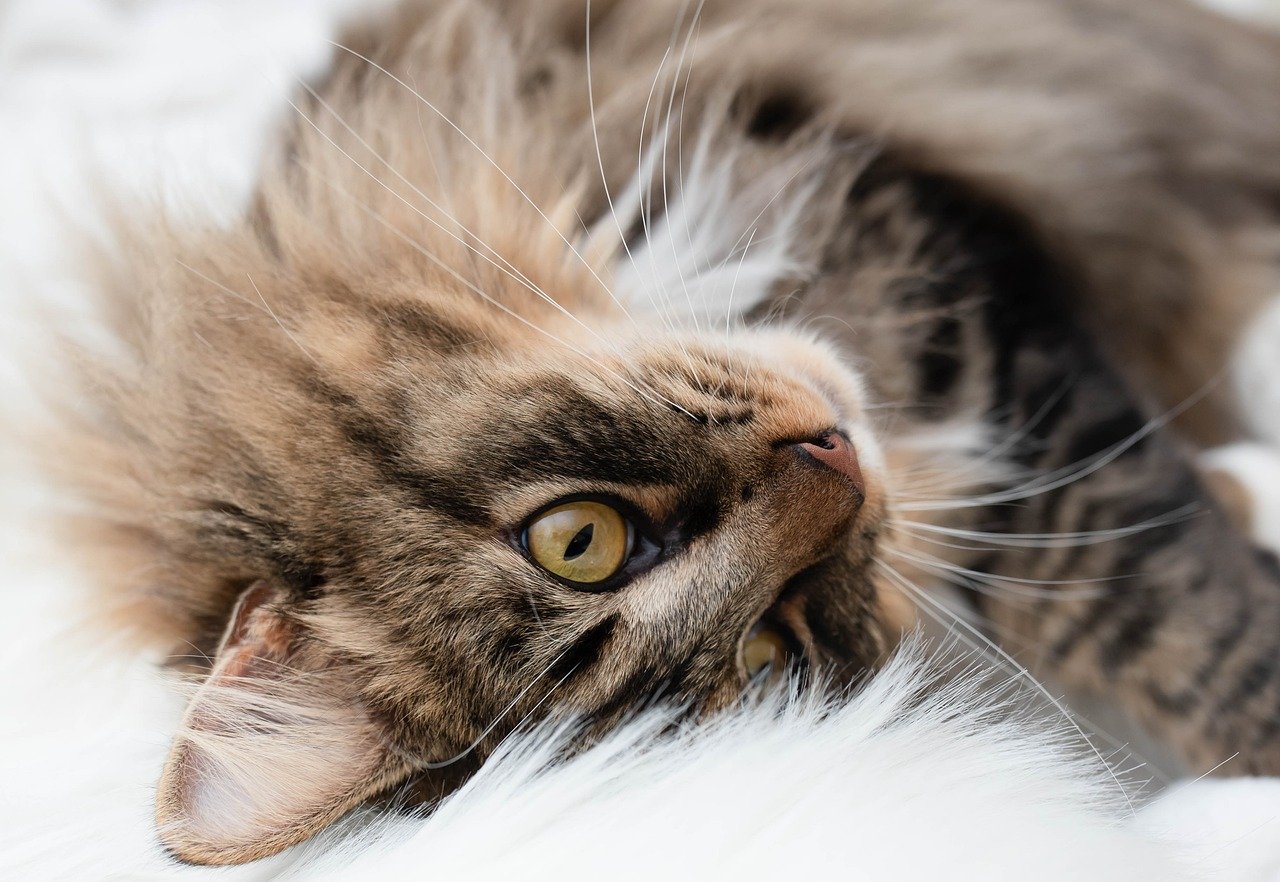
Understanding Dehydration in Pets
This article explores the critical signs of dehydration in pets, helping pet owners recognize symptoms early to ensure timely intervention and proper care for their furry companions.
Dehydration occurs when pets lose more fluids than they consume. It’s like a car running out of gas; without enough fuel, it simply can’t function properly. Pets, much like humans, rely on water to maintain their bodily functions, regulate temperature, and support vital organs. When they are dehydrated, their bodies start to suffer, and the consequences can be serious. Understanding the causes and effects of dehydration is crucial for pet owners who want to keep their companions healthy and happy.
Several factors can contribute to dehydration in pets, including:
- Hot Weather: Just like us, pets can become dehydrated quickly in high temperatures.
- Illness: Conditions such as vomiting, diarrhea, or fever can lead to fluid loss.
- High Activity Levels: Pets that are very active, especially in warm weather, may not drink enough water to keep up with their energy expenditure.
- Age: Older pets may not drink as much water due to health issues or changes in their sense of thirst.
It’s essential to recognize that dehydration can escalate rapidly. Just a small loss of body fluids (about 5% of body weight) can lead to mild dehydration, while a loss of 10% can be severe and potentially life-threatening. This is why being proactive and aware of your pet's hydration status is vital.
As responsible pet owners, it’s our duty to monitor our furry friends closely. This means not only ensuring they have access to fresh water at all times but also being vigilant about their behavior and physical condition. If you notice any signs of dehydration, such as dry mouth, lethargy, or decreased skin elasticity, it’s time to take action. Remember, a hydrated pet is a happy pet!
Recognizing the common symptoms of dehydration in pets can be lifesaving. Symptoms include dry gums, lethargy, and decreased skin elasticity, which indicate that immediate action may be necessary.
A dry mouth and gums are primary indicators of dehydration. Pet owners should regularly check their pets' oral health to identify these signs early.
To assess gum moisture, lift your pet's lip and observe the color and texture. Healthy gums should be pink and moist, while dry or pale gums indicate dehydration.
Lethargy is a critical sign of dehydration. Pets may become less active and show reduced interest in play, which can signal underlying health issues requiring attention.
Performing a skin elasticity test can help determine hydration levels. Gently pinch the skin on the back of your pet's neck and observe how quickly it returns to normal.
Certain factors increase the risk of dehydration in pets, including hot weather, illness, and high activity levels. Understanding these risks can help pet owners take preventive measures.
Hot weather and humidity can exacerbate dehydration. Pet owners should ensure their animals have access to fresh water and shade during outdoor activities.
Certain health conditions, such as diabetes or kidney disease, can increase a pet's risk of dehydration. Regular veterinary check-ups can help monitor and manage these risks effectively.
Prevention is key to keeping pets hydrated. Ensuring access to fresh water, monitoring activity levels, and adjusting care during hot weather can significantly reduce the risk of dehydration.
Providing plenty of fresh water and incorporating wet food into a pet's diet can enhance hydration. It's essential to encourage regular drinking, especially in warmer months.
Keeping track of your pet's water intake can help identify potential dehydration early. Pet owners should be aware of their pets' drinking habits and adjust accordingly.
Q: How can I tell if my pet is dehydrated?
A: Look for symptoms like dry gums, lethargy, and decreased skin elasticity. Performing a skin pinch test can also help assess hydration levels.
Q: What should I do if my pet shows signs of dehydration?
A: Offer fresh water immediately and consult your veterinarian if symptoms persist or worsen.
Q: Can certain foods help keep my pet hydrated?
A: Yes! Wet food can enhance hydration levels, and providing fresh fruits and vegetables can also contribute to their fluid intake.
Q: How much water should my pet drink daily?
A: Generally, pets should drink about 1 ounce of water per pound of body weight. However, this can vary based on activity level, climate, and diet.
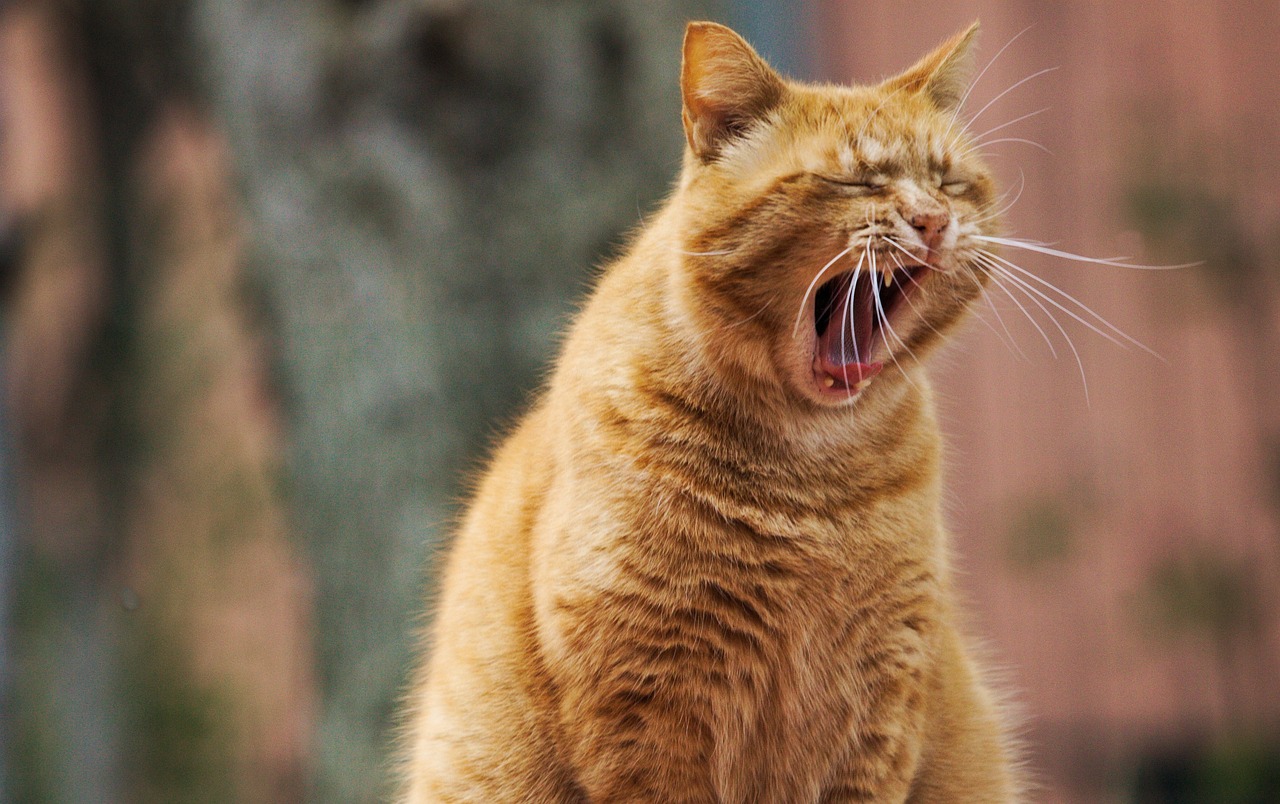
Common Symptoms of Dehydration
Recognizing the common symptoms of dehydration in pets can be lifesaving. Just like humans, our furry friends can suffer from dehydration, and it’s crucial to catch the signs early. Imagine your pet as a delicate flower that wilts when it lacks water—this is how serious dehydration can be! The symptoms can vary, but some of the most critical indicators include dry gums, lethargy, and decreased skin elasticity. Each of these symptoms serves as a red flag, signaling that your pet may need immediate attention.
A dry mouth and gums are primary indicators of dehydration. When you notice your pet’s mouth feels like the Sahara Desert, it’s time to take action. Pet owners should regularly check their pets' oral health to identify these signs early. Healthy gums should be a vibrant pink and moist, while dry or pale gums can indicate that your pet is not getting enough fluids. If you’re unsure, simply lift your pet's lip and take a look—it's a quick and easy way to assess their hydration status.
To assess gum moisture, lift your pet's lip and observe the color and texture. Here’s a quick guide:
| Gum Condition | Indication |
|---|---|
| Pink and Moist | Healthy Hydration |
| Pale or Dry | Dehydration |
If you see anything concerning, don’t hesitate to consult your veterinarian. Remember, just like a car that needs fuel, pets need water to function properly!
Lethargy is another critical sign of dehydration. If your pet seems less active or shows reduced interest in play, it could be a warning sign. Think of it this way: when you’re tired and sluggish, you probably haven’t had enough water. Your pet feels the same way! This lack of energy can signal underlying health issues that require attention. If your normally playful pup suddenly turns into a couch potato, it’s time to investigate further.
Performing a skin elasticity test can also help determine hydration levels. It’s a simple yet effective method. Gently pinch the skin on the back of your pet's neck and observe how quickly it returns to normal. If the skin snaps back quickly, your pet is likely well-hydrated. However, if it takes time to return to its original position, it could indicate dehydration. Think of it as your pet's skin giving you a little signal—like a flag waving in the wind!
In conclusion, being vigilant about these common symptoms can make all the difference in your pet's health. Just like we keep an eye on our loved ones, our pets deserve the same attention. If you notice any of these signs, don’t wait—act quickly to ensure your furry friend stays happy and healthy!
- How much water should my pet drink daily? Generally, pets should drink about 1 ounce of water per pound of body weight each day, but this can vary based on activity level and diet.
- What should I do if my pet is dehydrated? If you suspect dehydration, offer fresh water and consult your veterinarian immediately for further evaluation.
- Can I give my pet electrolyte solutions? Yes, but only those specifically formulated for pets. Human electrolyte solutions can contain ingredients that are harmful to animals.
Dry Mouth and Gums
When it comes to our furry friends, one of the most telling signs of dehydration is a . Just like humans, pets rely on moisture to keep their bodies functioning properly, and when they don’t get enough, it shows in their oral health. Imagine being parched on a hot day; that’s how your pet feels when they’re dehydrated. A quick check of their mouth can reveal a lot about their hydration status.
To assess your pet's oral health, simply lift their lip and take a look at their gums. Healthy gums should be a vibrant pink color and feel moist to the touch. If you notice that their gums are dry, pale, or even sticky, it’s a clear indication that they might be suffering from dehydration. This condition can escalate quickly, leading to more serious health issues if not addressed promptly.
Here’s a simple breakdown of what to look for when checking your pet’s mouth:
- Color: Gums should be pink. If they appear white or very pale, this could indicate a serious issue.
- Moisture: A healthy mouth is moist. If it feels dry, your pet may need more fluids.
- Texture: Gums should feel smooth and not sticky. A sticky texture is a warning sign.
Regularly checking your pet's mouth can be a lifesaver. Make it a part of your routine, just like brushing your teeth! If you notice any of these signs, it’s crucial to take action. Offer your pet fresh water immediately and consult your veterinarian if the signs persist. Remember, early detection can make all the difference in keeping your pet healthy and happy.
Q: How often should I check my pet's gums for signs of dehydration?
A: It's a good idea to check your pet's gums regularly, especially during hot weather or after exercise. Incorporating this into your grooming routine can help you spot any issues early.
Q: What should I do if my pet has dry gums?
A: If you notice your pet has dry gums, provide them with fresh water immediately. If the condition doesn't improve or if they show other signs of illness, consult your veterinarian as soon as possible.
Q: Can certain foods help keep my pet hydrated?
A: Absolutely! Incorporating wet food into your pet's diet can increase their overall fluid intake. Additionally, making sure they always have access to fresh water is crucial.
How to Check Gum Moisture
Checking your pet's gum moisture is a simple yet crucial step in assessing their hydration status. Just like humans, pets rely on adequate hydration to maintain their health and vitality. To perform this check, you’ll want to gently lift your pet's lip and inspect their gums closely. The color and texture of the gums can tell you a lot about their hydration levels.
Healthy gums should be a vibrant pink and feel moist to the touch. If you notice that their gums are dry or have a pale color, it may indicate that your furry friend is dehydrated. Here’s a quick guide to help you understand what you should look for:
| Gum Condition | Hydration Status |
|---|---|
| Bright Pink and Moist | Well-Hydrated |
| Pale or White | Possible Dehydration |
| Dry and Sticky | Dehydrated |
To make this process even easier, you can follow these steps:
- Gently lift your pet's lip to expose the gums.
- Observe the color: look for a healthy pink hue.
- Feel the texture: healthy gums should be moist, not dry or sticky.
- Press your finger gently against the gum and release: it should return to its normal color quickly.
If you find that your pet's gums are dry or pale, it’s essential to take action immediately. Offer them fresh water and monitor their drinking habits closely. If the condition persists or if you notice other symptoms, such as lethargy or loss of appetite, it’s time to consult your veterinarian. Remember, early detection can make all the difference in ensuring your pet stays healthy and happy!
- How often should I check my pet's gum moisture?
It's a good idea to check your pet's gum moisture regularly, especially during hot weather or after vigorous exercise. - What should I do if my pet is dehydrated?
Provide fresh water immediately and monitor their intake. If dehydration symptoms persist, contact your veterinarian. - Can certain foods help with hydration?
Yes! Incorporating wet food into your pet's diet can help increase their overall moisture intake.
Signs of Lethargy
Lethargy in pets is more than just a lazy afternoon; it's a significant indicator that something might be off with your furry friend. When your pet starts to show signs of lethargy, it can be alarming, prompting questions about their health and well-being. You may notice them lounging around more than usual, losing interest in their favorite toys, or even skipping meals. This change in behavior can be as subtle as a slight decrease in playfulness or as pronounced as an inability to get up from their cozy spot on the couch.
To understand lethargy better, consider it a red flag waving furiously in front of you. It’s your pet's way of communicating that something isn't quite right. Here are some signs to look out for:
- Reduced Activity: If your pet usually bounces around with excitement but suddenly seems disinterested in play, this could be a sign of lethargy.
- Changes in Eating Habits: A noticeable drop in appetite or refusal to eat can accompany lethargy, indicating that your pet may not feel well.
- Excessive Sleeping: While pets do love their naps, sleeping more than usual can be a cause for concern.
- Unresponsiveness: If your pet seems unresponsive or indifferent to your presence or commands, this could signal a serious issue.
Being aware of these signs is crucial for every pet owner. Just like humans, pets can experience fatigue, but when lethargy persists, it could indicate dehydration, illness, or other underlying health conditions. If your pet’s lethargy is accompanied by other symptoms such as vomiting, diarrhea, or changes in behavior, it’s essential to consult your veterinarian as soon as possible. Early intervention can make a world of difference in their recovery.
In conclusion, keeping an eye on your pet's energy levels is a simple yet effective way to keep them healthy. Remember, pets can’t tell us when they’re feeling off, so it’s up to us to be their advocates. If you notice any signs of lethargy, don’t hesitate to seek professional advice. After all, a happy, active pet is a healthy pet!
- What should I do if my pet is lethargic? It's best to consult your veterinarian, especially if lethargy is accompanied by other symptoms.
- Can dehydration cause lethargy? Yes, dehydration can lead to lethargy as it affects your pet's overall energy levels.
- How can I keep my pet hydrated? Ensure they have constant access to fresh water and consider adding wet food to their diet.
Skin Elasticity Test
The is a simple yet effective way to gauge your pet's hydration levels. Just like a well-tuned rubber band, the skin of a well-hydrated pet should snap back quickly when pinched. To perform this test, gently grasp the skin on the back of your pet's neck or between their shoulder blades. Pull it up slightly and then release. If the skin returns to its original position almost immediately, your pet is likely well-hydrated. However, if it takes a moment or two to settle back down, it could be a sign of dehydration.
It's important to note that while this test can be a useful indicator, it should not be the sole method for assessing hydration. Factors such as age, breed, and overall health can influence skin elasticity. For instance, older pets may naturally have less elastic skin, which can lead to misleading results. Therefore, it’s crucial to consider the skin elasticity test alongside other signs of dehydration, such as dry mouth, lethargy, and decreased gum moisture.
To help you understand the significance of the skin elasticity test better, here's a quick comparison of what to look for:
| Skin Elasticity Response | Hydration Status |
|---|---|
| Returns immediately | Well-hydrated |
| Returns slowly | Possibly dehydrated |
| Stays tented | Dehydrated |
In conclusion, the skin elasticity test is a quick and easy way to monitor your pet's hydration status. However, it should be combined with other observations and assessments. If you notice any signs of dehydration, it’s always best to consult with your veterinarian for a thorough examination and appropriate care. Remember, just like you wouldn’t ignore a thirst signal in yourself, your furry friend deserves the same attention!
- How often should I perform the skin elasticity test?
It's a good idea to check your pet's hydration status regularly, especially during hot weather or after exercise. - Can dehydration happen overnight?
Yes, pets can become dehydrated quickly, especially if they have been ill or if the weather is particularly hot. - What should I do if my pet shows signs of dehydration?
If you suspect dehydration, offer fresh water immediately and consult your veterinarian for further guidance.

Risk Factors for Dehydration
Understanding the risk factors for dehydration in pets is crucial for every pet owner. Just like humans, our furry friends can suffer from dehydration under certain conditions, and being aware of these factors can help us take proactive measures to keep them healthy and happy. One of the most significant risk factors is hot weather. During the sweltering summer months, pets are more likely to lose fluids quickly. Just think about how you feel when the temperature rises; our pets feel it too! It's essential to ensure they have access to fresh water and shaded areas when outside.
Another critical factor is illness. Pets suffering from health issues, such as vomiting, diarrhea, or fever, can lose fluids rapidly. These conditions can lead to serious dehydration if not addressed promptly. For instance, a dog with a stomach bug might not only refuse food but also water, leading to a dangerous situation. Regular veterinary check-ups can help detect underlying health problems that might put your pet at risk.
Moreover, high activity levels can also contribute to dehydration. Dogs and cats that are particularly active, especially in warm weather, can deplete their fluids faster than usual. If your pet loves to run around in the park or chase after toys, make sure to offer them water breaks frequently. It’s like running a marathon without hydration; it’s a recipe for disaster!
To summarize, here are some common risk factors for dehydration in pets:
- Hot weather: Increased temperature can lead to excessive fluid loss.
- Illness: Conditions like vomiting or diarrhea can rapidly deplete hydration levels.
- High activity levels: Active pets may require more fluids, especially during playtime.
By being aware of these risk factors, pet owners can take the necessary steps to prevent dehydration. Whether it’s providing plenty of water, monitoring your pet's health, or keeping an eye on the weather, a little vigilance can go a long way in ensuring your pet stays hydrated and healthy.
Here are some common questions pet owners might have regarding dehydration:
- What are the early signs of dehydration in pets? Look for symptoms like dry gums, lethargy, and decreased skin elasticity.
- How can I encourage my pet to drink more water? Try offering fresh water regularly, using pet water fountains, or incorporating wet food into their diet.
- Is it safe to give my pet electrolyte solutions? Consult your veterinarian before giving any supplements to ensure they are safe for your pet.
Environmental Influences
When it comes to keeping our furry friends happy and healthy, the environment they live in plays a crucial role. Just like humans, pets can be significantly affected by their surroundings, particularly when it comes to hydration. Hot weather and high humidity levels can lead to increased fluid loss, putting pets at a higher risk of dehydration. Imagine being outside on a scorching summer day without a refreshing drink—your pets feel the same way!
During those sweltering months, it’s essential for pet owners to be vigilant. Here are some key environmental factors to consider:
- Temperature: Pets can overheat quickly, especially breeds with thick fur. On hot days, make sure they have access to shade and cool areas.
- Humidity: High humidity can make it difficult for pets to cool down. This can lead to excessive panting and further fluid loss.
- Exercise: While regular exercise is vital, it’s important to adjust activity levels based on the weather. Opt for early morning or late evening walks when it’s cooler.
As a responsible pet owner, you should always have fresh water available and encourage your pets to drink regularly. You might even consider using a pet water fountain to make drinking more appealing. Just think about it: would you prefer stale water or a cool, flowing stream? Pets are no different!
Moreover, if you notice your pet panting excessively or seeking out cooler spots in the house, it’s a clear indication that they might be struggling with the heat. Always be proactive and keep an eye on your pets, especially during extreme weather conditions. Your attention can make all the difference in preventing dehydration and ensuring their well-being.
Q1: How can I tell if my pet is dehydrated?
A: Look for signs such as dry mouth and gums, lethargy, and decreased skin elasticity. Regular checks on your pet's gum moisture can help catch dehydration early.
Q2: What should I do if I suspect my pet is dehydrated?
A: If you suspect dehydration, offer your pet fresh water immediately. If symptoms persist, consult your veterinarian for further guidance.
Q3: Can certain breeds be more susceptible to dehydration?
A: Yes, some breeds, particularly those with short muzzles or thick coats, are more prone to overheating and dehydration. Always monitor these pets closely in hot weather.
Q4: How much water should my pet drink daily?
A: On average, pets should drink about one ounce of water per pound of body weight daily. However, this can vary based on activity level and environmental conditions.
Q5: Is wet food beneficial for hydration?
A: Absolutely! Incorporating wet food into your pet's diet can help increase their overall water intake, especially for those who may not drink enough water.
Health Conditions
When it comes to our furry companions, their health is of utmost importance, and certain can significantly increase the risk of dehydration. For instance, pets suffering from diabetes often experience increased urination, which can lead to a loss of fluids. This condition requires vigilant monitoring of their water intake and overall hydration levels. Similarly, kidney disease can impair a pet's ability to concentrate urine, making them more susceptible to dehydration. It's crucial for pet owners to understand these conditions and how they affect hydration.
Additionally, conditions such as vomiting and diarrhea can cause rapid fluid loss, resulting in dehydration. If your pet is experiencing these symptoms, it’s essential to take immediate action. Regular veterinary check-ups can help in early detection of such health issues, allowing for timely intervention. A proactive approach can make all the difference in your pet's hydration status.
Furthermore, medications can also play a role in hydration. Some drugs may increase thirst or urination, thus affecting your pet's fluid balance. It’s vital to discuss any medications your pet is taking with your veterinarian to understand their potential impact on hydration.
In summary, being aware of these health conditions and their implications on hydration can help pet owners take the necessary steps to keep their pets healthy. Regular monitoring and veterinary consultations are key to ensuring that your furry friend stays hydrated and happy.
- How can I tell if my pet is dehydrated? Look for signs like dry gums, lethargy, and decreased skin elasticity.
- What should I do if I suspect my pet is dehydrated? Offer them fresh water immediately and consult your veterinarian for further advice.
- Can certain foods help with hydration? Yes, incorporating wet food into your pet's diet can enhance their hydration levels.
- How much water should my pet drink daily? It varies by size and activity level, but a general rule is about 1 ounce of water per pound of body weight.
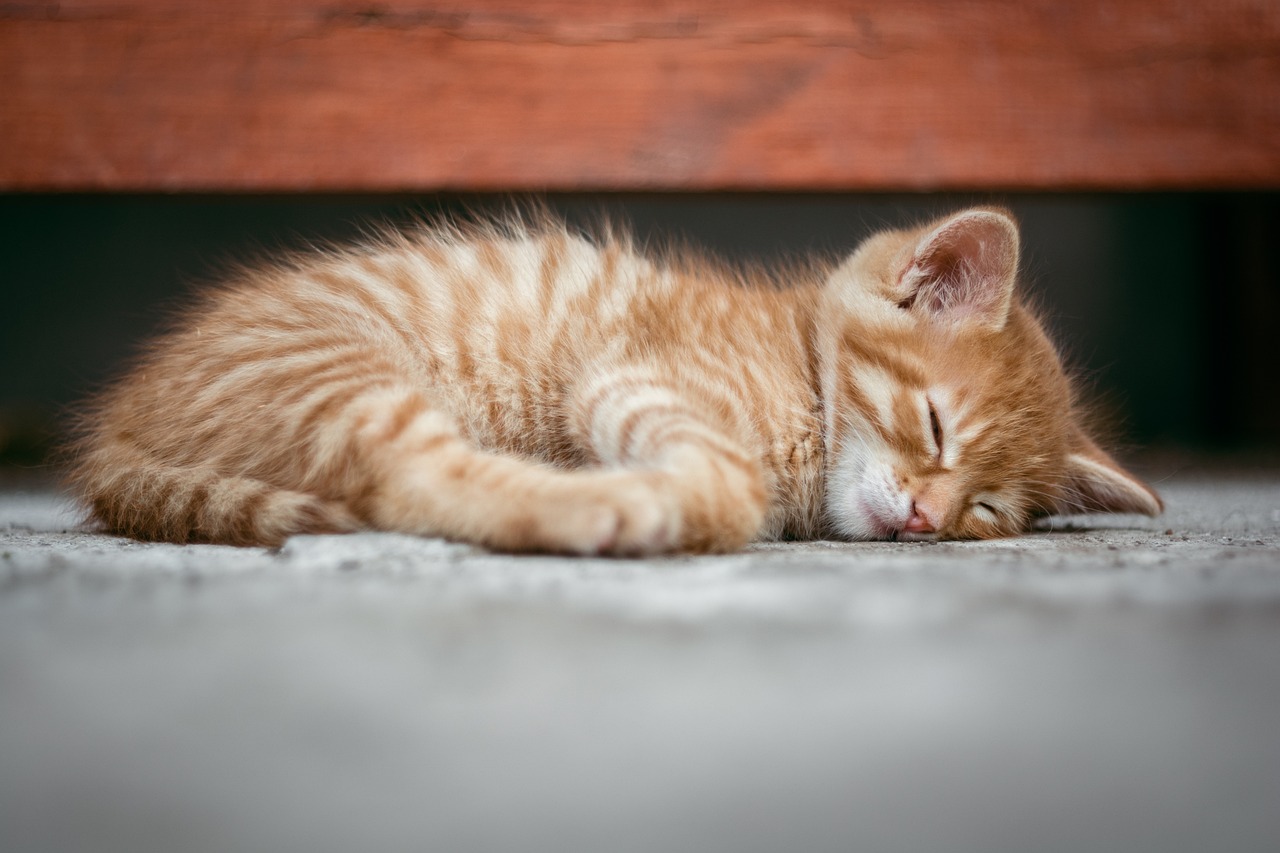
Preventing Dehydration
When it comes to keeping our furry friends healthy, prevention is always better than cure. Just like humans, pets need a steady supply of water to thrive, and making sure they stay hydrated can save you from a world of worry. So, how can you ensure your pet is drinking enough? The first step is to provide constant access to fresh water. This means not only filling their bowl regularly but also ensuring that the water is clean and free from contaminants. Pets can be picky, and a dirty bowl might just discourage them from drinking.
Another great strategy is to incorporate wet food into your pet's diet. Wet food has a higher moisture content compared to dry kibble, which can significantly boost hydration levels. If your pet is a fan of both, consider mixing wet and dry food to keep meals exciting while enhancing their fluid intake. Just like we enjoy a refreshing drink with our meals, pets appreciate a little extra moisture in their food too!
Additionally, it's essential to monitor your pet's activity levels, especially during hot days. If your pet is particularly active or if the temperature is soaring, they may need more water than usual. Make it a habit to encourage your pet to take breaks and hydrate, especially after playtime. You might even want to carry a portable water bottle and bowl during walks or outdoor activities. This way, you can offer them a drink whenever the need arises.
Let’s not forget about the importance of creating a comfortable environment for your pets. If it's a scorching day, ensure they have access to shade or a cool area to retreat to. Pets can get overheated quickly, and providing a cool space can help them maintain their hydration levels. As a rule of thumb, always keep an eye on your pet’s behavior during hot weather. If they seem sluggish or are panting excessively, it might be time to bring them inside for a break.
To further assist in monitoring hydration, consider using a water intake tracker. This can be as simple as marking on a calendar how much water your pet drinks each day, or using a pet water fountain that measures consumption. Being aware of their drinking habits can help you identify any changes that might indicate dehydration. Remember, if your pet suddenly starts drinking less, it could be a sign of an underlying issue that needs attention.
Here are some quick tips to keep your pet hydrated:
- Always provide fresh, clean water.
- Consider adding wet food to their diet.
- Encourage regular drinking, especially during warm weather.
- Monitor their water intake and adjust as necessary.
- Provide shade and a cool environment during hot days.
By implementing these strategies, you can significantly reduce the risk of dehydration in your pets. Just like we need to stay hydrated to feel our best, our pets do too. Keeping an eye on their water intake and encouraging them to drink can lead to a happier, healthier life for your furry companions.
Q: How much water should my pet drink daily?
A: The general rule of thumb is that pets should drink about 1 ounce of water per pound of body weight each day. However, this can vary based on their activity level and diet. Always consult your veterinarian for personalized advice.
Q: What are the first signs of dehydration in pets?
A: The first signs of dehydration can include dry gums, lethargy, and decreased skin elasticity. If you notice these symptoms, it’s important to take action immediately.
Q: Can certain foods help keep my pet hydrated?
A: Yes! Incorporating wet food into your pet's diet can help boost their hydration levels. Additionally, offering treats that contain high water content, like watermelon or cucumber, can also be beneficial.
Q: What should I do if I suspect my pet is dehydrated?
A: If you suspect your pet is dehydrated, provide them with fresh water immediately. If they refuse to drink or show severe symptoms, contact your veterinarian for further guidance.
Hydration Tips for Pets
This article explores the critical signs of dehydration in pets, helping pet owners recognize symptoms early to ensure timely intervention and proper care for their furry companions.
Dehydration occurs when pets lose more fluids than they consume. It's essential to understand its causes and effects to prevent serious health issues in animals. Just like humans, pets need water to thrive, and without it, they can face a variety of health problems. Imagine trying to function without water on a scorching day; it’s the same for our furry friends.
Recognizing the common symptoms of dehydration in pets can be lifesaving. Symptoms include dry gums, lethargy, and decreased skin elasticity, which indicate that immediate action may be necessary. Understanding these signs can help you act quickly and ensure your pet stays healthy.
A dry mouth and gums are primary indicators of dehydration. Pet owners should regularly check their pets' oral health to identify these signs early. Think of it as a quick health check-up you can do at home; it’s simple and can make all the difference.
To assess gum moisture, lift your pet's lip and observe the color and texture. Healthy gums should be pink and moist, while dry or pale gums indicate dehydration. If you notice any abnormalities, it’s crucial to consult your veterinarian immediately.
Lethargy is a critical sign of dehydration. Pets may become less active and show reduced interest in play, which can signal underlying health issues requiring attention. If your usually playful pup is suddenly lounging around, it’s time to investigate further.
Performing a skin elasticity test can help determine hydration levels. Gently pinch the skin on the back of your pet's neck and observe how quickly it returns to normal. If the skin takes longer to return, it’s a sign that your pet may be dehydrated.
Certain factors increase the risk of dehydration in pets, including hot weather, illness, and high activity levels. Understanding these risks can help pet owners take preventive measures. It’s like knowing the weather before heading out; being informed allows for better preparation.
Hot weather and humidity can exacerbate dehydration. Pet owners should ensure their animals have access to fresh water and shade during outdoor activities. Think of it as creating a little oasis for your pet; a cool drink and a shady spot can make all the difference.
Certain health conditions, such as diabetes or kidney disease, can increase a pet's risk of dehydration. Regular veterinary check-ups can help monitor and manage these risks effectively. It’s like having a safety net; regular visits can catch issues before they escalate.
Prevention is key to keeping pets hydrated. Ensuring access to fresh water, monitoring activity levels, and adjusting care during hot weather can significantly reduce the risk of dehydration. Just like you wouldn’t run a marathon without water, your pet needs hydration to stay active and healthy.
Providing plenty of fresh water and incorporating wet food into a pet's diet can enhance hydration. It’s essential to encourage regular drinking, especially in warmer months. Consider placing multiple water bowls around your home to make it easier for your pet to stay hydrated. You can also try adding ice cubes to their water for a refreshing twist.
Another great tip is to monitor your pet's water intake. Keeping track of how much they drink daily can help you identify potential dehydration early. If you notice they’re not drinking as much as usual, it might be time to entice them with flavored water or pet-safe electrolyte solutions. Remember, just like us, pets can be picky about their water, so keep it fresh and appealing!
- How much water should my pet drink daily? - It varies by size and activity level, but a general rule is about 1 ounce of water per pound of body weight.
- What are the risks of dehydration in pets? - Dehydration can lead to serious health issues, including kidney failure, heatstroke, and even death if not addressed promptly.
- Can I give my pet sports drinks? - It's best to avoid human sports drinks, as they often contain ingredients that are not safe for pets. Stick to water or vet-approved electrolyte solutions.
Monitoring Water Intake
Monitoring your pet's water intake is crucial for their overall health and well-being. Just like humans, pets rely on adequate hydration to maintain their bodily functions, and being aware of their drinking habits can be a game changer. Have you ever noticed how your furry friend seems to drink more on hot days? That's their way of telling you they're thirsty! Keeping track of their water consumption can help you spot potential dehydration before it becomes a serious issue.
To effectively monitor your pet's water intake, start by measuring how much water you put in their bowl each day. You can use a measuring cup to ensure accuracy. After a day, check how much is left in the bowl. This simple act can give you valuable insights into your pet's hydration habits. If you notice that they are drinking less than usual, it may be time to take action. For example, if your dog typically drinks about 1 ounce of water per pound of body weight daily, any significant drop could be a red flag.
Another useful method is to observe your pet's behavior. Are they showing signs of thirst, like constantly going to the water bowl or licking their lips? If so, they might not be getting enough fluids. Additionally, consider factors like their diet, activity level, and the weather. Pets that eat dry kibble may need more water compared to those that consume wet food, which contains moisture. By keeping an eye on these aspects, you can better understand your pet's hydration needs.
Here’s a quick reference table to help you gauge your pet's hydration based on their size:
| Pet Size | Daily Water Intake (approx.) |
|---|---|
| Small (up to 10 lbs) | 1/2 to 1 cup |
| Medium (11-30 lbs) | 1 to 2 cups |
| Large (31-60 lbs) | 2 to 4 cups |
| X-Large (61 lbs and up) | 4 cups and above |
In conclusion, being proactive about monitoring your pet's water intake can help you catch signs of dehydration early. Whether it's through measuring their water consumption or observing their behavior, staying attentive can lead to timely interventions that keep your furry companions happy and healthy.
- How can I encourage my pet to drink more water? You can try using a pet water fountain, adding water to their food, or offering ice cubes as a treat.
- What are the signs of severe dehydration in pets? Severe signs include sunken eyes, dry skin that doesn't bounce back, and lethargy. If you notice these, consult a vet immediately.
- Can certain foods help with hydration? Yes! Wet food or hydrating treats can help increase your pet's moisture intake.
Frequently Asked Questions
- What are the early signs of dehydration in pets?
Early signs of dehydration can include dry gums, lethargy, and decreased skin elasticity. If you notice your pet is less active or their mouth feels dry, it's crucial to take action quickly.
- How can I check if my pet is dehydrated?
You can perform a simple skin elasticity test by gently pinching the skin on the back of your pet's neck. If it doesn't return to its normal position quickly, your pet may be dehydrated. Additionally, check their gums; they should be pink and moist.
- What factors increase the risk of dehydration in pets?
Several factors can increase the risk of dehydration, including hot weather, high activity levels, and certain health conditions like diabetes or kidney disease. Always ensure your pet has access to fresh water, especially during hot days.
- How can I encourage my pet to drink more water?
Encouraging your pet to drink more water can be as simple as providing fresh water daily, using a pet water fountain, or incorporating wet food into their diet. Adding ice cubes to their water bowl can also make drinking more appealing!
- What should I do if I suspect my pet is dehydrated?
If you suspect your pet is dehydrated, it's essential to act quickly. Offer them water immediately and monitor their condition. If symptoms persist or worsen, consult your veterinarian for further evaluation and care.
- Can dehydration be prevented?
Yes, dehydration can often be prevented by ensuring your pet always has access to fresh water, monitoring their activity levels, and being mindful of their health conditions. During hot weather, provide shade and limit outdoor activities.

